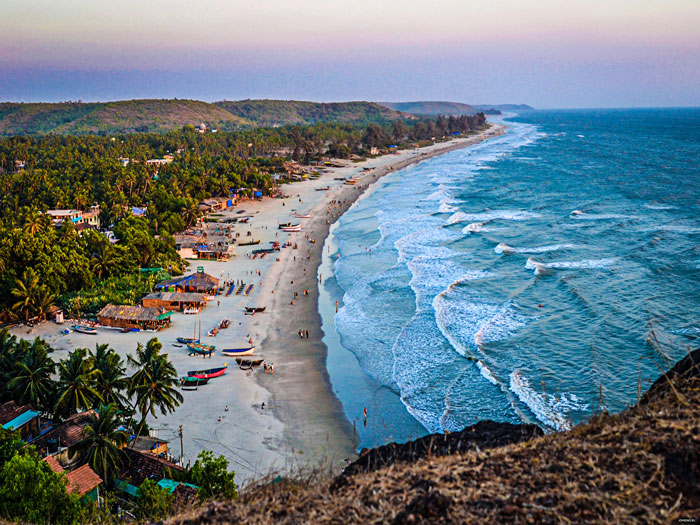Goa Visit Place
Goa Tourism
Places To Visit In Goa
 Vasco-Da-Gama: The area came under Portuguese rule around 1543, and within a few years, it was transformed into one of western India's busiest ports. The Portuguese built a fort at Sada, near the tip of the land jutting into the Arabian sea. This allowed them to effectively control the movement of ships into the Zuari river.
Vasco-Da-Gama: The area came under Portuguese rule around 1543, and within a few years, it was transformed into one of western India's busiest ports. The Portuguese built a fort at Sada, near the tip of the land jutting into the Arabian sea. This allowed them to effectively control the movement of ships into the Zuari river.
The fort had its most glorious moment in 1685, when Old Goa came under attack from King Sambhaji of the Marathas and the Portuguese moved women, children and other non-combatants here for safe keeping. The fort was abandoned soon after, despite plans to make Mormugao the capital of the Portuguese colony of Goa, and today only some remnants of the ramparts can be seen.
At the base of the ruins of Sada fort, there is a small but beautiful beach which can be reached via steps leading down the steep cliffside. The beach remains pretty isolated fro most of the day except for a few locals who venture down for a dip in the sea. There is also a fresh-water spring in the hillside which has a constant flow of water round the year.
The main town of Vasco is well laid out pretty much in a straight line along parallel roads interlinked by small bylanes. There is hardly any landmark worth making a visit to Vasco, except for the 400-year old St. Andrews Church which lies at the entrance to the city. In recent times, the city has been attracting local visitors, to what is easily the best cinema theatre in the whole of Goa.
There are two beaches near the city. The bigger and the more famous is the Bogmalo beach which is about 8 kms south-east of the town and the smaller one named Hollant lies just about halfway along the same road. Bogmalo beach has luxury and mid-range hotels in the neighbourhood along with quite a few shacks where you can sample some tasty sea-food dishes.
Along this same road to the Bogmalo beach is located the Naval Air Museum, the only one of its kind in the whole of Asia. It has on display, some of the fighter aircraft which have done duty for India in its conflicts with the enemy.
Vasco-da-Gama is a key shipping centre, very important for the economy of Goa, which has a large number of mines in its interiors. The Mormugao port handles heavy traffic of container vessels and iron ore barges carrying ores and minerals to countries such as Japan and Korea.
 How To Get There
How To Get There
By Air: Goa's only airport, called the Goa Airport lies on top of a rocky plateau at Dabolim, approximately 4 km southeast of Vasco-da-Gama. The Airport is under the control of the Indian Navy, but a large new civilian terminal handles all of Goa's rapidly increasing air traffic from national and international flights.
There are pre-paid taxi counters inside the airport and private taxis are also available. It is best to confirm a fare with the driver before you start off on your journey. Local buses are also available from the intersection immediately outside the airport to go to Vasco, from where there are services to Margao and Panaji.
By Rail: The small railway station is located at the centre, a few minutes walk from either end of the well laid out town. A number of trains that service destinations in neighbouring states like Karnataka, depart from here.
By Road: Most buses arriving from Panaji or Margao, stop at the Interstate Kadamba Bus Terminus, 3 km east of the town centre. There are local minibuses which carry passengers from the main bus stand to the city area. There is another bus stand near the market area.
Auto-rickshaws and motorcycle taxis are also available at the junction of the main thoroughfare, the Swantantra Path and Dr Rajendra Prasad Avenue.
Stay updated
Subscribe to our newsletter to get early notifications of our great offers and promotions!
